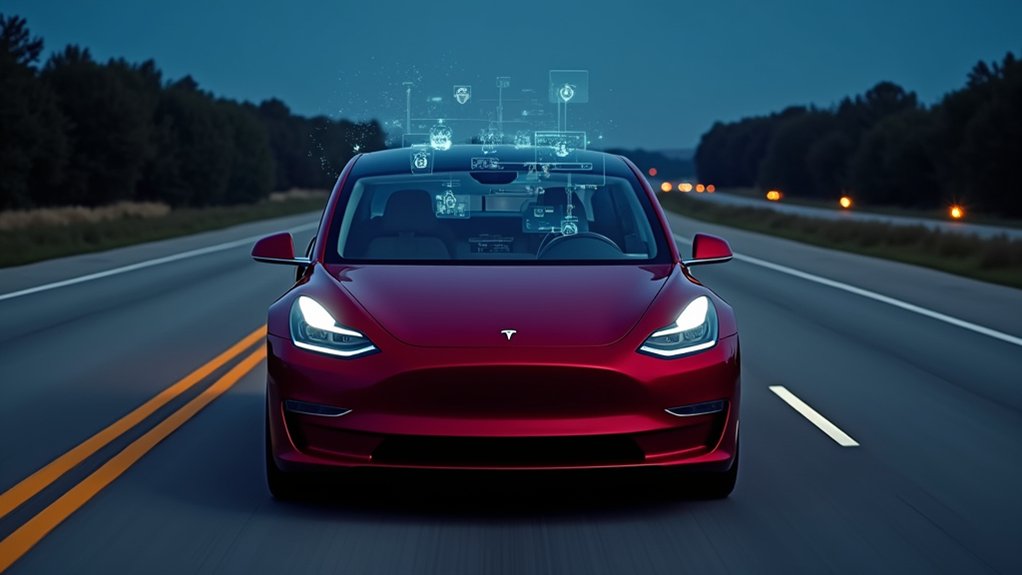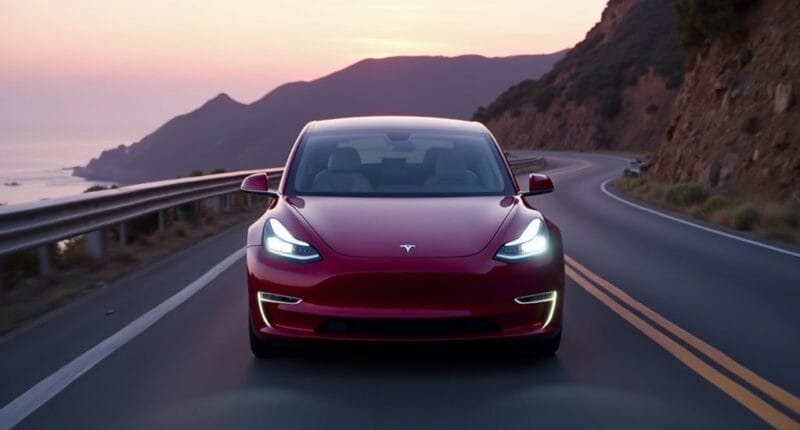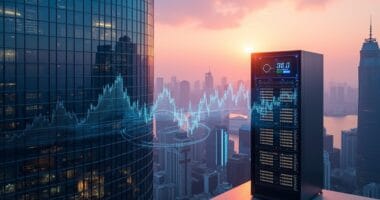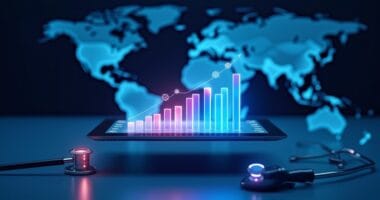Tesla is flipping the self-driving script with its daring AI gamble. Forget lidar and the usual gimmicks—Tesla’s all about using real-world data and neural networks to make its cars smarter. With over half a million Teslas collecting driving data, they’re learning nonstop. While competitors tinker with simulations, Tesla dives into actual streets. It’s bold, it’s brash, and it just might change the game. Stick around, because the details get even wilder.

Tesla is charging ahead with its audacious bet on artificial intelligence in the domain of self-driving cars. Forget the traditional methods everyone else is using. No lidar, thank you very much! Instead, Tesla leans into camera-based systems and its own custom hardware. Yes, custom chips—they’re like the secret sauce for their Full Self-Driving (FSD) software. Why go with off-the-shelf parts when you can create your own?
With Autopilot sitting at Level 2, Tesla’s all about enhancing the driving experience with features like Autosteer and traffic-aware cruise control. But that’s just the appetizer. The real deal is Tesla’s FSD, which is designed to operate on a carefully concocted mix of deep learning and real-world data. That’s right, over 500,000 Teslas are out there gathering data—millions of vehicle miles used to train those fancy neural networks. This data collection provides a competitive edge in the self-driving car market, giving Tesla an unmatched ability to refine its algorithms.
But here’s the kicker: while competitors are busy running simulations, Tesla’s cars are actually learning from real-world driving scenarios. They process real-time data, predicting the movements of other road users. It’s like each Tesla is its own little sponge, soaking up knowledge and improving as the miles go by. Talk about an impressive feedback loop!
Sure, traditionalists might raise an eyebrow at replacing legacy code with a neural network-driven approach, but who cares? It’s all about efficiency. Tesla’s aim is to maximize AI training with as little hardware tinkering as possible. The company isn’t just about making electric cars; it’s about paving the road for future autonomy. Full Self-Driving (FSD) is being continuously refined, enabling better navigation and traffic light recognition capabilities.
And let’s not forget the Tesla Dojo—an AI training powerhouse that reflects the brand’s commitment to in-house innovation. It’s a bold strategy. Tesla is breaking boundaries and setting the stage for what could be a game-changer in self-driving tech. The audacity of it all is, well, intoxicating.





